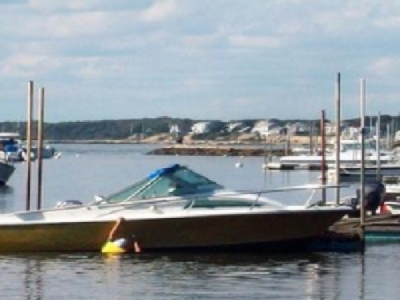
Posted on October 9, 2018
The long-awaited and complicated Pocasset River dredging will not be undertaken this year. Instead, a wider project is pending.
The Bourne Shore and Harbor Committee has voted to postpone the river project until 2019 given a number of factors, including cost.
“Mechanically, dredging is cost prohibitive,” Natural Resources Director Tim Mullen said. “We don’t have enough money to pay for mechanical dredging at roughly $100 cubic yard and pay the outstanding $70,000 balance of the cost of our 10-year comprehensive dredge permit.”
Mullen said there is $362,000 for issues related to the dredge project, including engineering and permitting.
“We still have some final touches to do at Barlows Landing, like lighting at the end of the pier and for the dinghy dock,” he said. “We’re permitted to dredge 9,000 cubic yards in the Pocasset River. In all likelihood, it will be less expensive if we go with hydraulic dredging.
“Due to limitations of the equipment, the hydraulic dredge cannot dredge areas that only need a foot or less material removed,” he continued. “The equipment can’t be that precise, it really needs over a foot. We’ll probably dredge somewhere around 5,000 cubic yards in the river as some of the areas to be dredged are less than a foot.”
Mullen said the goal is to avoid putting dredged spoils on the dewatering basin along Shore Road at the Singing Bridge. One option involved piping and placing sediment at the Monks Park entrance off Shore Road, but the idea was quickly discarded as unfeasible.
“That’s why we started looking at mechanical dredging,” he said. “The county has a new dredge. It’s still not working right, but it’s a more powerful dredge. The old Codfish (dredge) can only pump spoils about a mile through pipe with the use of booster pumps. The new dredge can pump up to around 9,000 feet or more with booster pumps. So we’ve been told.”
In that light, the shore and harbor committee decided to combine dredging the Little Bay Channel with the Pocasset River project. The planned dewatering basin will be built on the bathing beach at Monument Beach. This is the same location that was used last autumn. The basin likely would extend the entire stretch of beach next to the marina.
“Little Bay is a huge job, and we’d need a two-compartment basin,” Mullen said. “About 22,000 cubic yards will come out of Little Bay and Tahanto. Pretty much all that is sand suitable for beach nourishment. But Bourne has nowhere to put it.”
The town landfill division cannot take the 22,000 yards from Little Bay and another estimated 5,000 from the river.
“That won’t happen,” Mullen said.
The DNR director contacted Sandwich Town Manager Bud Dunham to gauge that town’s interest in loading, trucking, and unloading the Bourne dredged spoils at Town Neck Beach along Cape Cod Bay, which includes a dune system that protects the great marsh beyond it. The town is contacting private contractors to secure hauling estimates.
“We would give it to them if they took care of the trucking,” Mullen said. “They would have to pay a contractor. They don’t have equipment and manpower to do it themselves. You would need 30 cubic-yard trailers to move that much sand. Several of them, and a front-end loader at Mo Beach, loading them up all day.”
Sandwich Town Manager Bud Dunham said hauling costs are still being gauged.
“I know DPW is preparing a scope of work that includes loading and hauling the material,” Dunham said. “We also need to contract shaping it once it’s placed. We think it’s about 5,500 cubic yards and appreciate Bourne thinking of us. Hopefully, the final price is something we can afford.”
Sandwich remains in the market for sand. The neighboring town placed over 100,000 cubic yards of sediment on its storm-tossed beach a few years ago only to watch last March’s nor’easters wash most of it away. The town seeks replacement sediment, and Mullen can provide it.
Bourne at this point has a year to find a customer to take the sand from Shore Road. While awaiting a Sandwich response to the sand offer, Bourne essentially finds itself in a situation where it needs to find a suitable up-land location to stockpile the dredged sediment for future usage.
“We would use it ourselves in Sagamore Beach at some point after a nor’easter,” Mullen said. “If the town has to pay to truck all that sand to Sandwich or another location, it’ll need lots more money.”
Mullen estimates the cost of moving sediment from Shore Road to the Bourne landfill off MacArthur Boulevard would total $60,000. The cost of shipments to Sandwich could easily double or triple that amount.
“Well over $100,000,” he said. “Plus the cost of a front- end loader and operator to load trucks all day.”
The busy Pocasset River was last completely dredged in the early 1950s. Over the decades, the need to suitably dispose of sediment filled with dredge has complicated projects.
Source: Bourne





